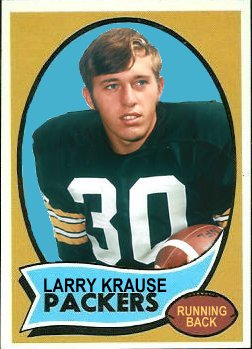
Despite missing out on his top choice for the Packers’ first round selection in 2000, this draft is the one Ron Wolf should have gone out on. According to Andrew Brandt at Bleacher Report, Wolf had targeted pass rusher John Abraham in 2000, but the Jets selected him one slot ahead of Green Bay. Instead, Wolf looked at the legal and physical troubles of tight end Mark Chmura and drafted Miami’s massive tight end Bubba Franks with the 14th pick in the draft. Although never a great player, Franks was solid and made several Pro Bowls on his knack for catching touchdown passes in the Red Zone.
After Franks, Wolf was on a hot streak, with nine of his 12 selections playing for the Packers in 2000. Wolf drafted Tennessee tackle Chad Clifton in round two, Nebraska defensive tackle Steve Warren in round three, Ohio State linebacker Na’il Diggs in round four along with his defensive back teammate Gerry Berry, San Diego State pass rusher Kabeer Gbaja-Biamila in round five, Wisconsin tackle Mark Tauscher in round seven, as well as Central Florida wide receiver Charles Lee and Florida linebacker Eugene McCaslin also in round seven.
Warren, Berry, Lee and McCaslin never worked out, but the other five all became long-time starters in Green Bay.
Rounding out the 2000 rookie class were punter Josh Bidwell who had been drafted in 1999, but missed that season fighting cancer, an undrafted runner from Graceland University named Herbert Goodman, and waiver wire linebacker Chris Gizzi from Air Force. While Gizzi spent two years as a Packer, his most memorable moment was leading the team onto the field in the first game after 911 while carrying the American flag. He is now a strength and conditioning assistant with the Pack. Bidwell also became a regular.
KGB took a year of seasoning before becoming a contributor, but Franks, Clifton, Diggs and Tauscher all moved right into the starting lineup. In particular, Clifton and Tauscher proved to be naturals. It’s hard to pick between them, but I go with Mark Tauscher, the seventh round perfectionist, as the Packers’ top rookie for 2000.






















